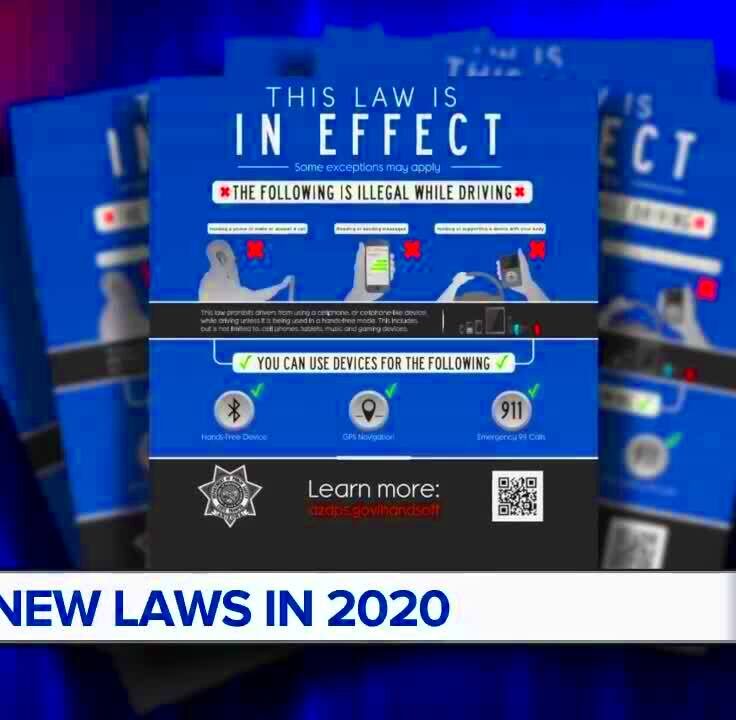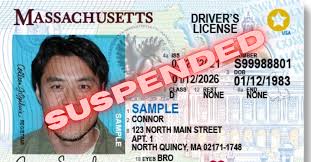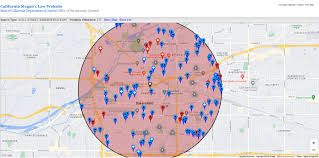Compliance with Arizona’s Pursuit Policy Laws
When news reports on police chases it can be tempting to view them as thrilling scenes straight out of a film. Nevertheless Arizona has established laws that regulate these pursuits to strike a balance between ensuring public safety and maintaining the effectiveness of law enforcement. Lets explore the details of these laws and how they influence the approach taken by police during chases.
The Purpose Behind Pursuit Policies

In Arizona the main goal of pursuit policies is to prioritize safety during high speed chases. These policies go beyond being mere formalities; they are designed to safeguard both the public and law enforcement officers. Picture a situation where a chase poses a risk to lives—pursuit policies play a role in determining whether to proceed with or halt a pursuit.
Throughout history there have been instances where police chases without restraint resulted in tragic consequences impacting innocent bystanders and posing serious dangers. Arizona has implemented pursuit policies to avoid such situations by offering a guideline for officers. Here are the main objectives of these policies.
- Protecting Public Safety: Ensuring that the risk of a pursuit does not outweigh the benefits of apprehending a suspect.
- Guiding Officer Discretion: Offering officers guidelines to make informed decisions during high-pressure situations.
- Minimizing Collateral Damage: Reducing the likelihood of accidents and injuries during chases.
Key Aspects of Arizona’s Pursuit Policies
The pursuit policies in Arizona are well thought out and designed to address different situations that officers may come across. These elements offer a framework for managing pursuits with the goal of ensuring safety.
The following are key components of these policies.
- Criteria for Initiating a Pursuit: Pursuits are generally initiated when the suspect is involved in a serious felony or poses a significant threat to public safety. The decision is often based on the severity of the crime and the immediate danger posed.
- Supervision and Approval: In many cases, the pursuit must be approved or monitored by a supervisor to ensure that the decision aligns with policy and safety protocols.
- Speed and Location Restrictions: There are specific rules about how fast officers can go and where they can pursue suspects. For example, pursuits are often limited in residential areas or places where high traffic could pose additional risks.
- Termination Guidelines: Pursuits are to be terminated if they become too dangerous or if the suspect’s identity is known and can be apprehended later. The focus is on avoiding unnecessary risks.
Law enforcement seeks to find a middle ground between apprehending suspects and prioritizing road safety through these policy measures.
How Pursuit Policies Affect Law Enforcement
Picture this scenario you’re a cop speeding along the road in a bid to catch a fleeing suspect. The rush of adrenaline is palpable but so are the potential dangers. In Arizona the pursuit protocols have a impact on how officers navigate these intense situations. These guidelines help strike a balance between carrying out pursuits efficiently and prioritizing safety.
These policies have a considerable impact on law enforcement in various aspects.
- Decision-Making: Officers must weigh the benefits of a chase against potential risks. Pursuit policies provide clear criteria to help them decide when to initiate or terminate a chase. This ensures that decisions are not made impulsively but are based on established guidelines.
- Operational Protocols: Officers are trained to follow specific procedures during a pursuit. This includes maintaining a certain distance from the suspect and coordinating with other units to avoid collisions. Pursuit policies help standardize these practices across different departments.
- Safety Measures: Policies often include safety protocols like speed limits and road conditions to minimize the risk of accidents. Officers are required to continuously assess the safety of the pursuit, considering factors such as traffic density and road conditions.
- Legal and Accountability Aspects: Clear guidelines help protect officers from legal repercussions by ensuring their actions are in line with established protocols. This also fosters accountability, as there are specific rules and records about each pursuit.
Basically the aim of Arizonas pursuit policies is to help law enforcement strike a balance in their decision making. It ensures that the pursuit of suspects doesn’t come at the expense of public safety or the well being of officers.
Implications for Drivers During Police Pursuits
When a police chase happens it’s not only the cops who feel the pressure. For a driver seeing or getting involved in a pursuit can be quite an intense experience. The pursuit policies in Arizona have a direct impact on drivers influencing how they engage with and respond to high speed chases.
Here’s how these policies impact drivers:
- Increased Safety: Pursuit policies are crafted to limit the dangers of high-speed chases. For drivers, this means a lower risk of being caught in an accident caused by a fleeing suspect or the pursuing police vehicles.
- Clear Instructions: If a chase is approaching, officers are trained to use sirens and lights to alert other drivers. This is intended to give you time to safely pull over or move out of the way, minimizing the risk of collisions.
- Understanding Risk Levels: Drivers can benefit from understanding that not all pursuits are equal. Policies dictate when pursuits are initiated and terminated, based on the severity of the situation. Knowing that there are checks in place can provide some peace of mind.
- Legal Consequences: If you’re involved in a pursuit, whether as a fleeing suspect or inadvertently affected, there can be legal consequences. Being aware of the pursuit policies can help you understand the legal landscape and protect your rights.
In the end, Arizona’s approach to pursuits seeks to find a middle ground, allowing law enforcement to pursue suspects while prioritizing the safety of regular drivers on the road.
Recent Changes in Arizona’s Pursuit Policy Laws
The laws governing pursuit policies in Arizona have changed over the years to address new challenges and perspectives. Recent revisions show an increased focus on finding a balance between the requirements of law enforcement and the safety of the public. These modifications are influenced by lessons learned from past incidents as well as ongoing developments in policing practices.
Let’s take a closer look at some of the important updates that have taken place lately.
- Enhanced Safety Protocols: Recent updates have introduced stricter safety measures. For example, there are now more detailed guidelines on speed limits during pursuits and mandatory use of technology such as dashcams to record chases.
- Greater Emphasis on Supervision: New rules require more stringent supervision during pursuits. Supervisors are now more involved in the decision-making process, ensuring that high-speed chases are justified and safe.
- Revised Termination Criteria: Policies have been adjusted to make it easier to call off a pursuit if it becomes too dangerous. This change aims to prevent high-risk situations from escalating further.
- Public Transparency: There is a push for greater transparency regarding pursuit incidents. Recent changes include requirements for departments to release information about chases and their outcomes, promoting accountability and public trust.
These adjustments are part of a continuous drive to improve pursuit protocols making sure they align with the changing requirements of law enforcement and prioritize community protection. Staying informed about these changes helps us grasp the impact of these regulations on our roadways and overall safety.
Legal Consequences of Violating Pursuit Policies
Picture a thrilling police chase taking a turn for the worse resulting in harm or property damage. For the police failing to follow pursuit protocols can result in serious consequences. Arizona has pursuit policies in place and breaching them can have extensive repercussions for both officers and their respective departments.
Here are a few potential outcomes.
- Civil Liability: Officers or their departments may face lawsuits if a pursuit causes harm to innocent bystanders or property. For example, if a chase leads to a car crash that injures someone, the department could be held liable for damages.
- Disciplinary Action: Internal investigations might result in disciplinary measures against officers who breach pursuit policies. This could range from reprimands to suspension or even termination, depending on the severity of the violation.
- Criminal Charges: In extreme cases, officers could face criminal charges if their conduct during a pursuit is deemed grossly negligent or reckless. Such charges are rare but highlight the seriousness with which pursuit policies are treated.
- Damage to Public Trust: Beyond legal consequences, failing to follow pursuit policies can erode public trust in law enforcement. This loss of confidence can impact community relations and the overall effectiveness of police work.
Essentially, the pursuit policies in Arizona go beyond being mere suggestions they hold the weight of legal requirements. Failing to uphold them can result in serious repercussions, both legally and professionally underscoring the importance of following these standards to ensure safety and uphold public confidence.
How to Seek Legal Assistance for Pursuit Policy Issues
If you ever get caught up in a problem with the law concerning police chases it’s crucial to get expert legal support. Whether you’re a cop dealing with consequences for your actions or someone impacted by a chase understanding the intricacies of pursuit policy laws calls for assistance.
Here’s a guide to help you locate the appropriate legal support.
- Consult Specialized Attorneys: Look for lawyers who specialize in law enforcement issues or civil rights cases. They will have the expertise to handle cases involving pursuit policies and understand the nuances of such legal matters.
- Gather Evidence: Collect all relevant documents, including police reports, dashcam footage, and any other evidence related to the pursuit. This information will be crucial for your lawyer to build a strong case.
- Seek Recommendations: Ask for referrals from trusted sources, such as friends, family, or other legal professionals. Personal recommendations can often lead you to attorneys with a proven track record in similar cases.
- Understand Your Rights: Familiarize yourself with your legal rights and the pursuit policies in question. This knowledge will help you communicate effectively with your attorney and make informed decisions about your case.
Getting the legal assistance can greatly impact the result of your situation. Having the attorney on your team can help you maneuver through the intricacies of matters related to insurance policies.
Frequently Asked Questions
Pursuit policies can be tricky and bewildering so it’s natural to have inquiries regarding their functioning and impact. To address common worries here are some often asked questions that may provide clarity.
- What is the primary goal of pursuit policies? The main goal is to ensure that high-speed chases are conducted safely, balancing the need to apprehend suspects with the risk to public safety.
- Who decides whether a pursuit should be initiated or terminated? Decisions are typically made by the pursuing officer, with oversight from a supervisor. Policies provide guidelines to help make these decisions based on the situation’s severity.
- What should I do if I am involved in a pursuit or affected by one? If you’re involved in a pursuit or affected by one, it’s important to seek legal assistance to understand your rights and navigate any potential legal consequences.
- How can I stay informed about changes in pursuit policies? Stay updated by following local news, police department announcements, and legal resources. Many departments also provide public updates on policy changes.
By grasping these elements you can navigate situations related to pursuit policies more effectively. This holds true whether you are personally impacted by them or simply seeking to comprehend their influence on your community.
Conclusion
The laws governing pursuits in Arizona play a role in how police handle high speed chases. By familiarizing ourselves with these rules we can gain insight into the delicate balance that law enforcement must strike, between catching suspects and prioritizing public safety. Whether you’re a driver caught up in a chase or an officer participating in one being aware of the details of these policies can have an impact.
These policies serve as more than mere obstacles; they play a role in safeguarding all road users. By offering a set of principles they assist officers in making swift and well considered choices, in challenging circumstances. For the general public these rules seek to mitigate the dangers linked to pursuits striking a balance between upholding the law and prioritizing safety.
In summary Arizonas approach to pursuit policies reflects its dedication to striking a balance between efficient law enforcement and ensuring community safety. Grasping and following these protocols is crucial for maneuvering through the intricate realm of chases and their impact resonates with everyone, directly or indirectly.


